Camel Embryo Transfer in Oman
Multiple ovulation and embryo transfer (MOET) is a reproductive technique applied to propagate the genetic potential of female in a short period of time. This technique is relatively new in camel (nearly 20 years) compared to other domestic animals. In this particular technique, the female which usually ovulates one ovum is being superstimulated to ovulate several ova (multiple ovulation). The superovulated camel (donor) is then covered with a fertile elite bull. Several days after fertilization, when the embryos reach the uterus (the place that pregnancy take places), the embryos are recovered through uterine flushing. The embryos are being evaluated, graded and washed several times prior to transfer to recipients. The recipients are genetically inferior and inexpensive camels act as surrogate mother. As a result, it is possible to produce several calves with high genetic merits from superior she-camel (donor) and camel bull. This allows to get at least 5 calves from any fertile superior females enrolling in MOET program early the breeding season. Since February 2010, we started the MOET program in Assafenat and Hejn Clinic belongs to Al-Asaeel Al-Fairouz located in Qarih, Souveigh, Sultanate of Oman. In our first attempt in the newly established clinic, we programmed 3 donors from which we were able to collect 12 embryos. We transferred embryos to 6 recipients from which we confirmed 5 pregnancies using ultrasound examination. This will be the first MOET program at a commercial basis in Sultanate of Oman. This will provide the new opportunity for those camel holders who wish to increase the number progeny from superior she-camels, on the yearly basis, while she still continue racing without being pregnant.

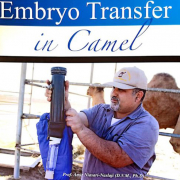
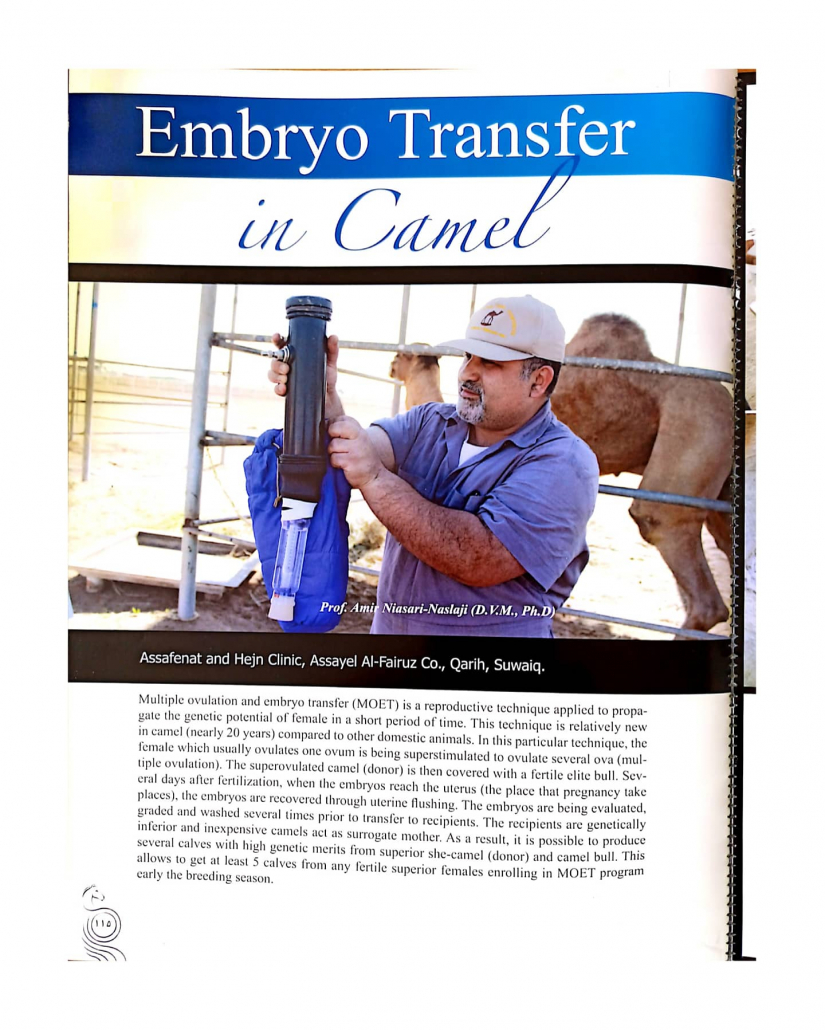
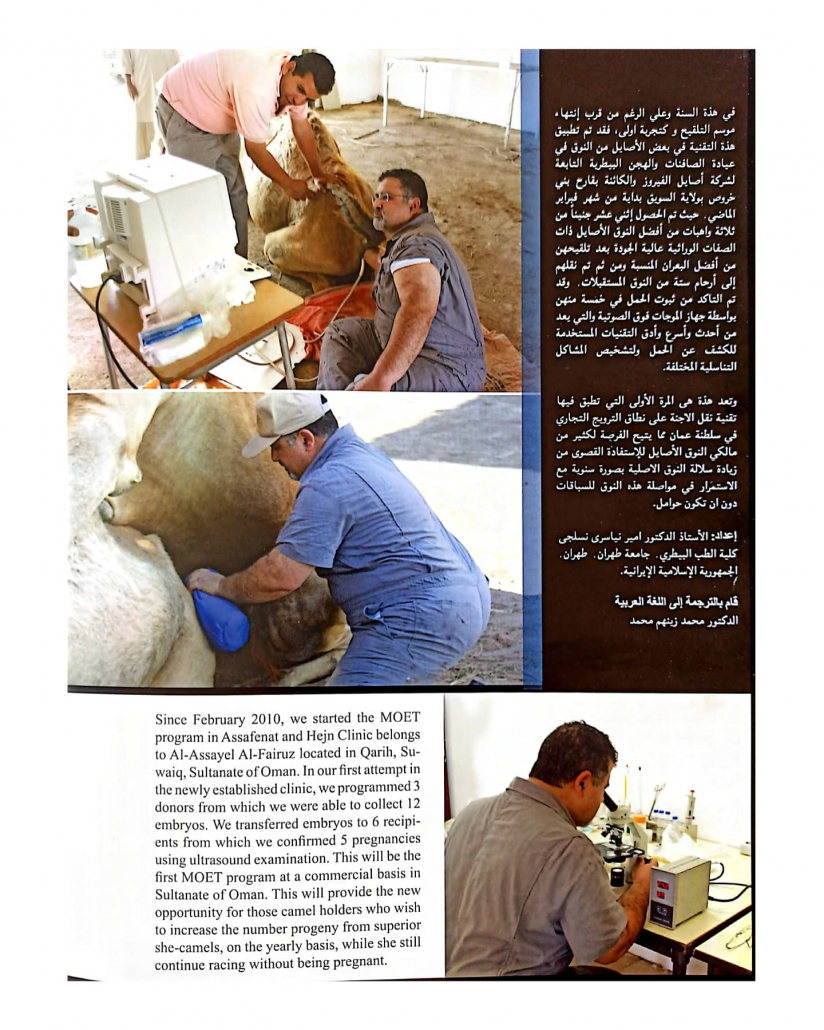
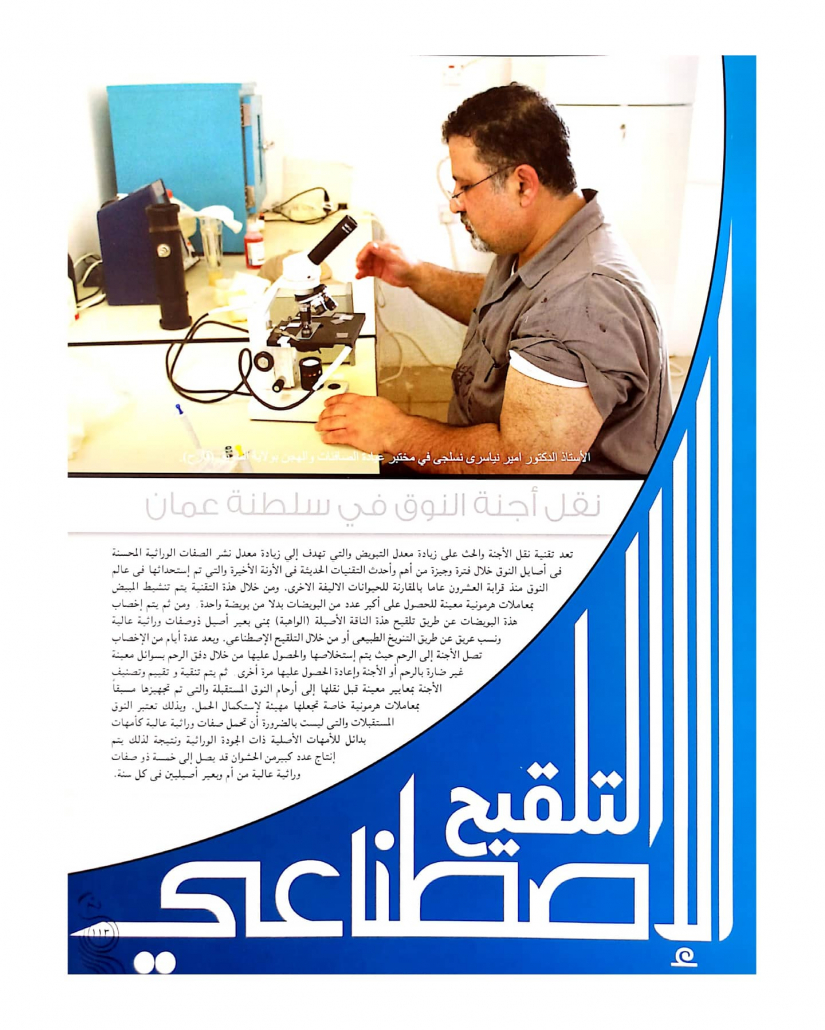

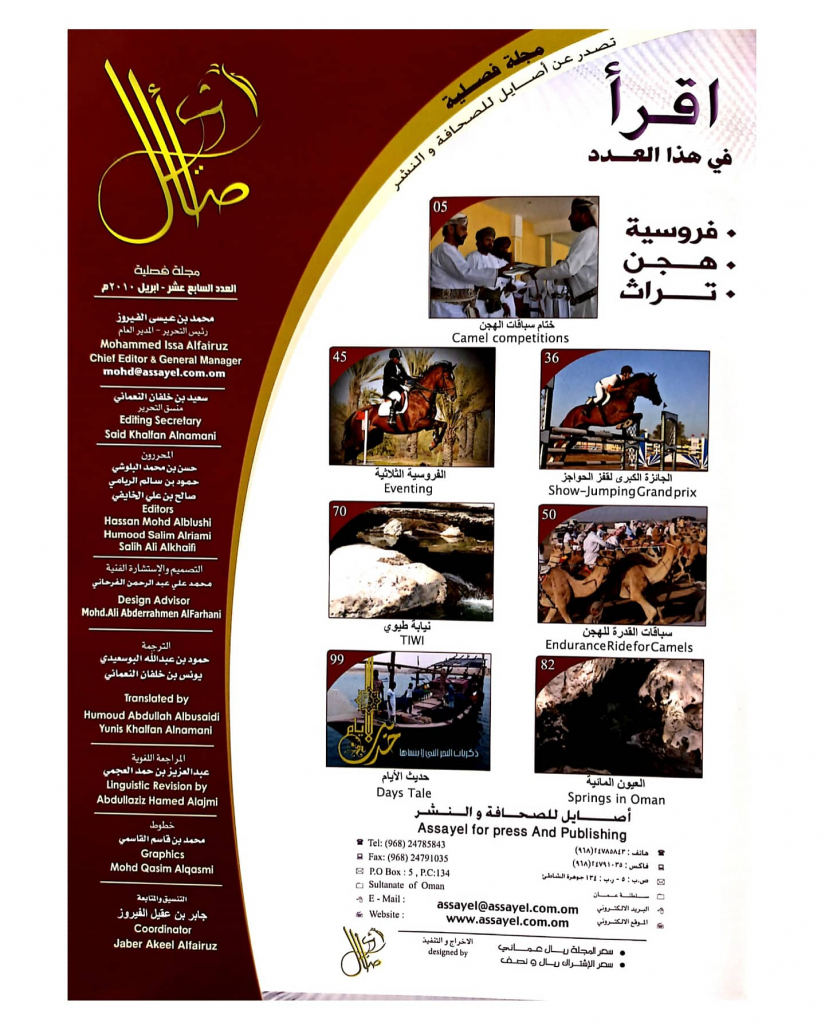
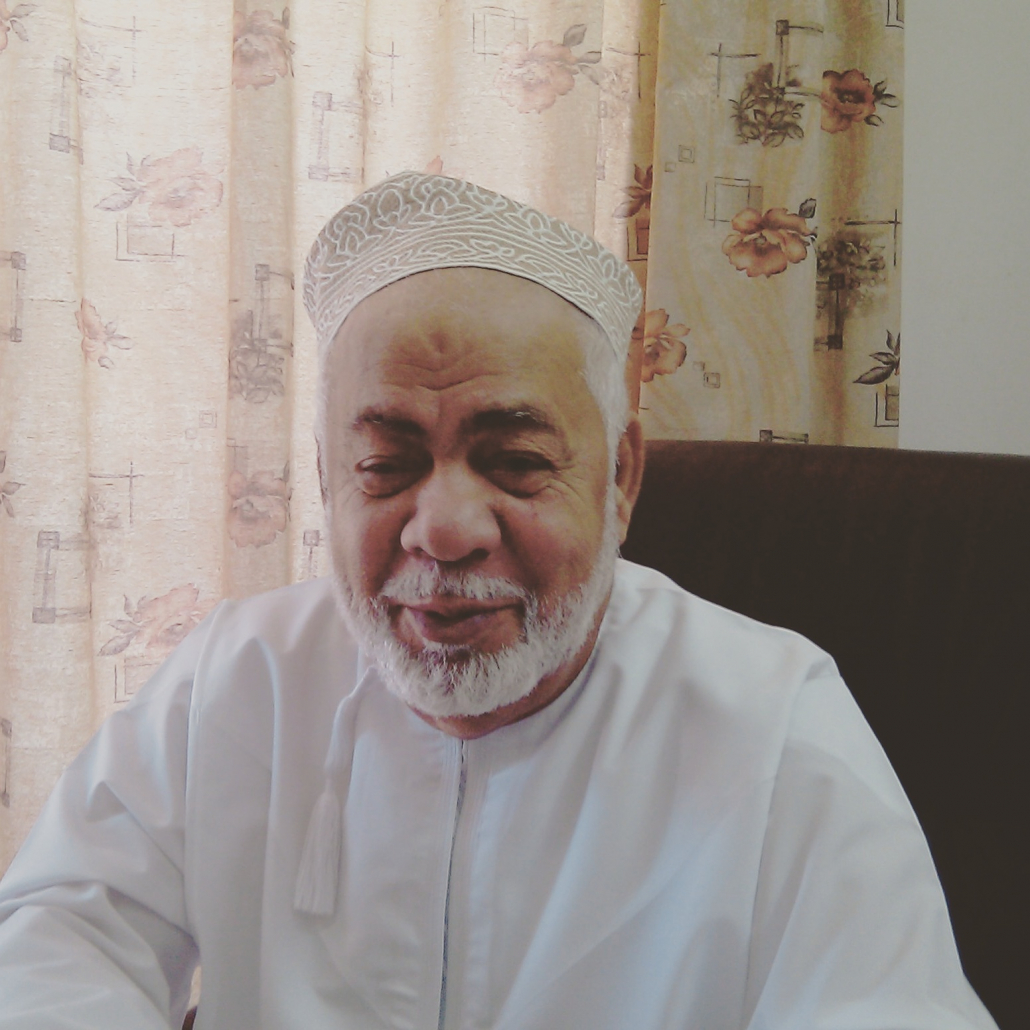


Leave a Reply
Want to join the discussion?Feel free to contribute!